The introduction of LED lighting into modern agronomic practices is not just a trend, but a revolution that is transforming the way we grow.
This article explores how LED lighting solutions specifically designed for professionals can not only improve plant growth, but also reduce energy costs and increase the profitability of farming operations. We will see that this technology also contributes to making agronomy more environmentally friendly, while adapting it to the upheavals linked to climate change.
How can LEDs be used in agronomy and agriculture?
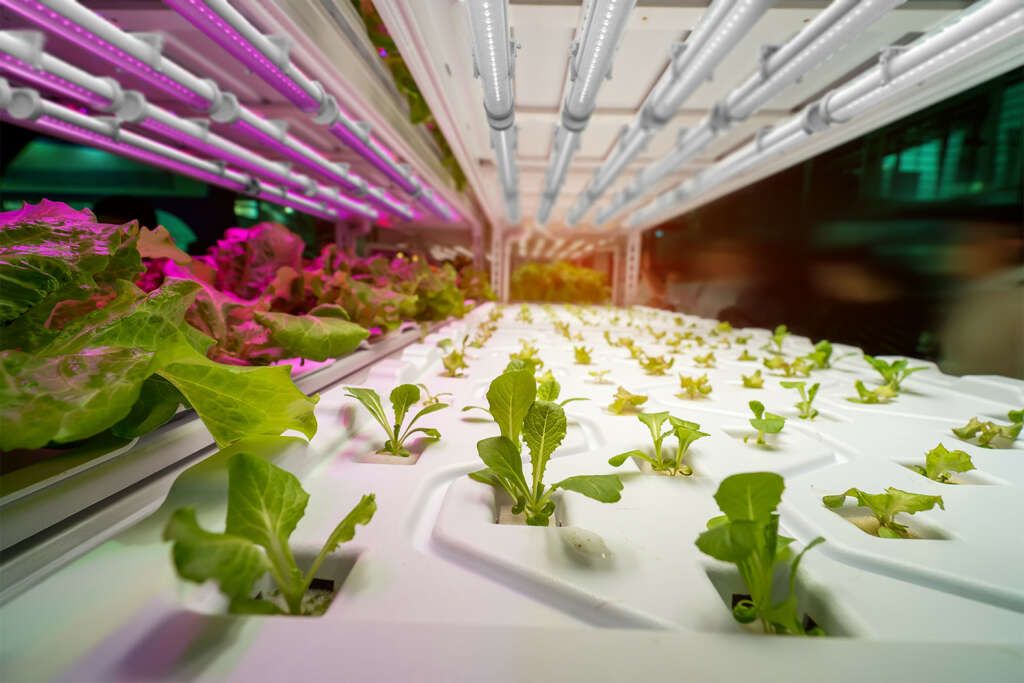
The adoption of LED lighting in agronomy is revolutionary, primarily due to its ability to simulate the optimal light spectrum needed for plant photosynthesis. Unlike traditional light sources, LEDs can be calibrated to emit precise wavelengths that promote plant growth at different stages of their development.
This precision not only helps improve crop health and yield, but also extend growing seasons, providing increased flexibility for indoor and greenhouse farming. Additionally, LEDs dissipate less heat, which reduces the risk of plant burns and allows for closer placement of the lights to maximize light efficiency.
This modern technology also allows lighting intensity to be easily adjusted in urban farms, meaning plants no longer need to stretch toward the sun to capture essential light. They can dedicate all their energy to bearing fruit and thus obtain higher yields.
The different wavelengths of light-emitting diodes even make it possible to create specific colours in the plants themselves, such as in the leaves of the red lollo rosso lettuce, which is very popular in Northern Europe but difficult to find in autumn and winter. Thanks to LEDs, this variety of lettuce can be produced locally and no longer needs to be imported, for example, from sunny Italy.
Economic and Ecological Benefits
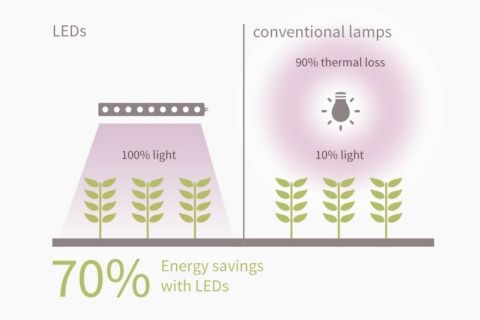
The use of LED lighting in agronomy and agriculture offers significant economic and ecological advantages :
Reducing energy consumption and carbon footprint
Economically, LEDs consume up to 50% less electricity than traditional lighting systems, such as sodium vapor lamps or fluorescents.
This energy efficiency translates into substantial savings on electricity bills, a crucial aspect for large-scale farms.
Environmentally, LEDs contribute to more sustainable agriculture by reducing the carbon footprint of agricultural operations, thanks to their long lifespan and the absence of toxic materials such as mercury, often present in traditional bulbs. This technology can help reduce global warming and its impacts, which is not insignificant.
In addition, the ability of LEDs to provide directional light reduces light waste, which is beneficial for controlled environment cultivation facilities.
Grow local instead of importing
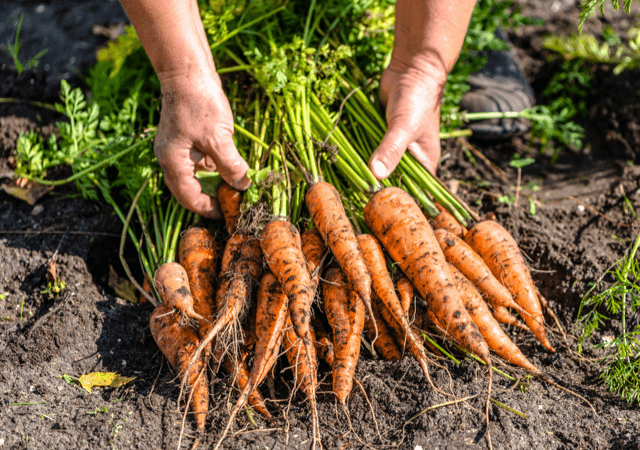
LED lighting, with its ability to simulate the full solar spectrum and adjust its wavelengths according to the specific needs of the plants, makes it possible to recreate the ideal conditions for growing products that would normally have to be imported. For example, tropical fruits that traditionally require warm and humid conditions can be grown in temperate climates thanks to precise control of the environment via LED lighting.
Furthermore, growing locally with the help of technologies like LEDs reduces reliance on long and complex supply chains, which are often vulnerable to disruption and contribute significantly to greenhouse gas emissions. This not only ensures the freshness and quality of food products, making them available shortly after harvest, but also supports the local economy by promoting jobs in the agricultural sector.
In short, the integration of LED lighting into modern agricultural practices offers an opportunity to strengthen food sovereignty, reduce the environmental impacts of agriculture and promote a more sustainable and responsible consumption model.
Adapting to global warming
LED lighting offers a robust solution for agriculture in the face of global warming by reducing the vulnerability of crops to heat waves, droughts and other climatic upheavals. Thanks to these controlled cultivation systems, plants benefit from a stable and optimized environment, independent of external climatic hazards.
This technology not only makes it possible to maintain constant production all year round, but also to guarantee food security in a context of increasingly unpredictable climate changes.
Reduce the impact of overexploitation of soils
By growing in controlled environments, such as greenhouses or vertical farms using mixed LED/sun lighting, it is possible to produce significant quantities of food without the intensive use of agricultural land, which allows soils to regenerate naturally.
Furthermore, as will be discussed in more detail in the next section, soilless or alternative substrate cultivation reduces the need for fertilizers and pesticides, reducing the risk of pollution and soil degradation. These methods contribute to a more sustainable management of land resources and the preservation of biodiversity.
Use fewer pesticides in crops
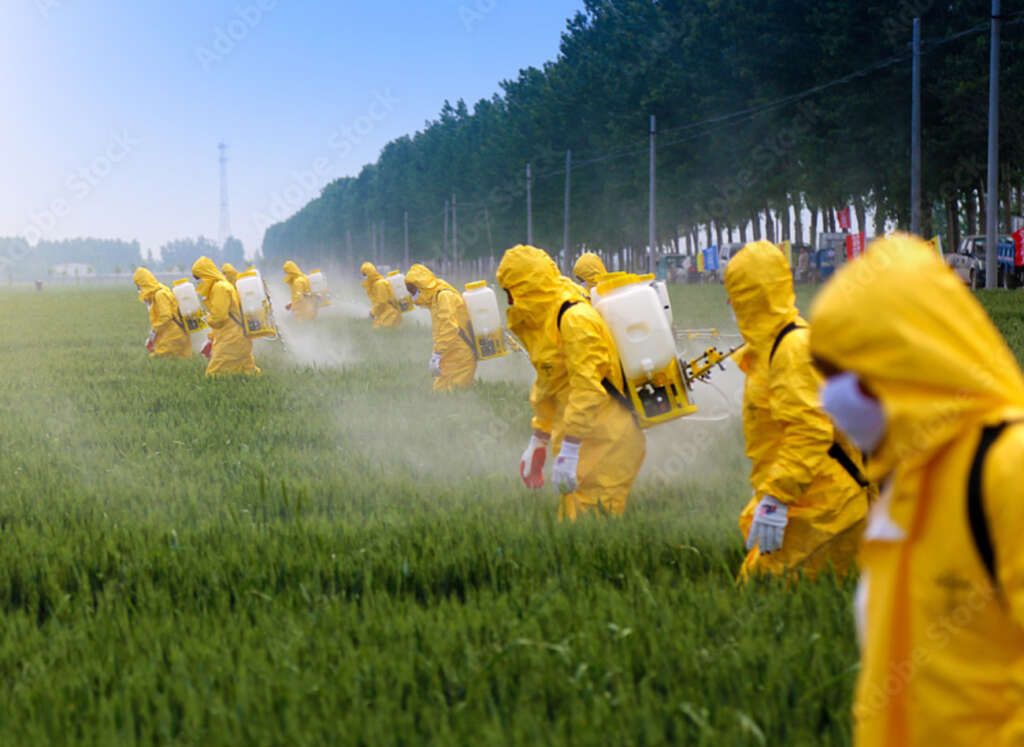
The use of LED lighting in modern agriculture offers significant benefits in reducing the need for pesticides, herbicides, and fungicides. This technology allows for precise control of light conditions, which is essential for optimizing plant growth and minimizing stresses that make plants vulnerable to disease and pests. By providing a specific light spectrum tailored to each stage of plant development, LEDs promote healthy, robust growth without the use of chemicals.
Additionally, by growing in a controlled environment where light, temperature, and humidity conditions are carefully regulated through LEDs and other devices, farmers can create a near-ideal environment that limits the proliferation of pathogens and pests. Fruits and vegetables can also retain their vitamin content for longer (up to 30% longer) thanks to blue lighting.
This method not only improves the quality and quantity of harvests, but also contributes to a more sustainable and environmentally friendly agriculture.
Innovations and Future Trends
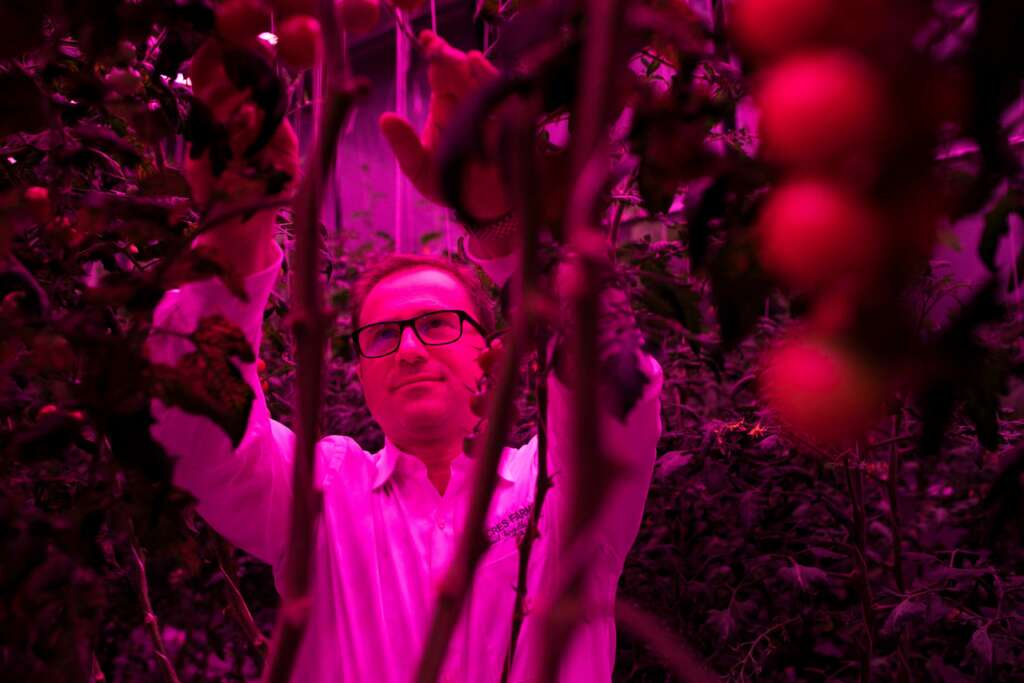
The future of LED lighting in agronomy is bright, with continued innovations paving the way for even more efficient and personalized farming practices. The integration of smart control technologies is one of the most significant advances, allowing farmers to precisely adjust the intensity and spectrum of LEDs according to the specific needs of plants at each stage of growth.
In addition, the emergence of IoT (Internet of Things) in agriculture now allows for remote monitoring and management of lighting systems, optimizing growing conditions without the need for constant on-site presence. These developments not only improve yields; they also facilitate more sustainable resource management, highlighting the central role of LEDs in the agriculture of tomorrow.
These new smart technologies also make it possible to adapt lighting according to climatic conditions, and reproduce the natural variations in brightness during the day and the seasons.
Examples of applications of LED technologies in the field of agronomy
Here are two concrete examples of applications of LED technologies for agronomy:
French tomatoes all year round
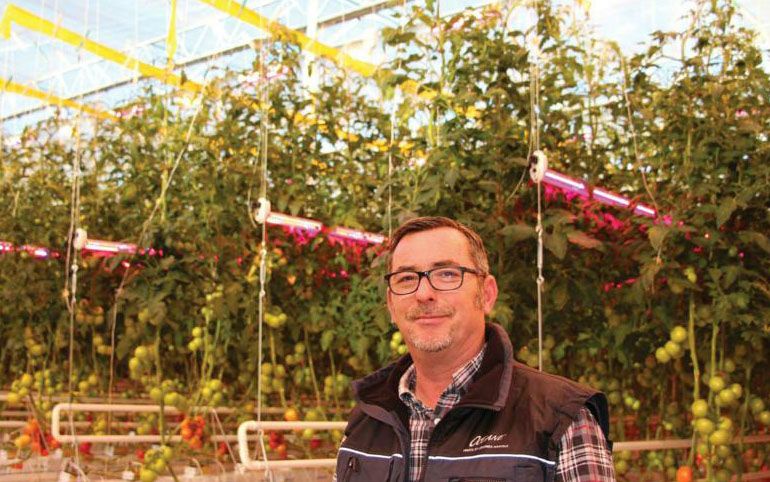
near Nantes (Source: reussir.fr)
In the Nantes region, Jean-René Briand uses sophisticated LED lighting to grow tomatoes all year round in his greenhouses. By equipping his facilities with yellow (sodium lamps) and red-violet (LEDs) spotlights, he creates a lighting environment that perfectly imitates summer, allowing for continuous production of juicy, fleshy tomatoes.
This would not have been possible a few years ago, when the cost of this equipment was too high to guarantee a good return on investment.
These innovative methods allow him to produce up to 85 kg of tomatoes per square meter, significantly increasing yields while filling in the winter periods of non-production.
To learn more, visit this link.
LED Lighting for Potatoes
Storage of potatoes is improved through the use of monochromatic LEDs that emit green or orange light, helping to prevent tuber greening. This technology helps to slow down the production of chlorophyll and solanine, thereby reducing the toxic risks associated with greening.
This makes it possible to maintain the appearance and quality of potatoes over extended periods.
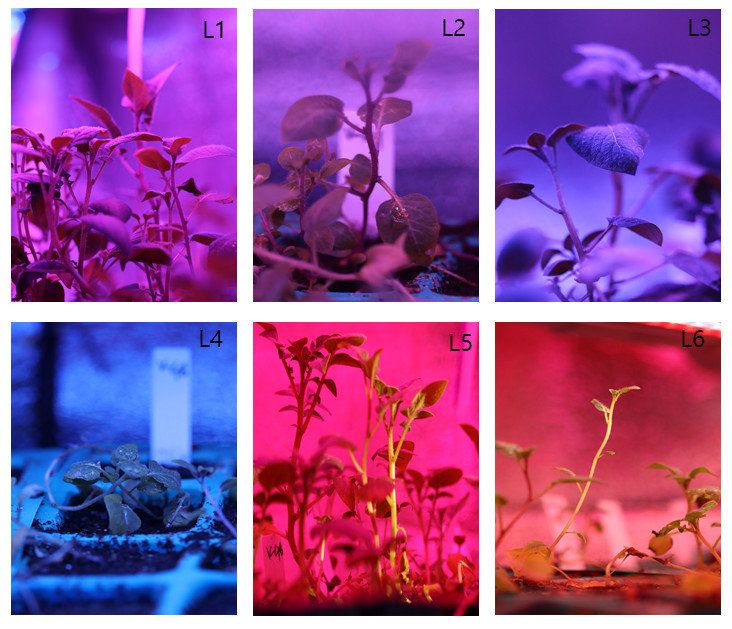
For more information, see this page.
A vertical farm in the Netherlands
Imagine a world where the seasons no longer dictate the rules of agriculture, where crops are abundant all year round, even in the middle of winter. This world is not a distant utopia but an emerging reality thanks to vertical farms equipped with LED lighting. These revolutionary installations rethink the way we cultivate by stacking crops in height rather than on the surface, thus optimizing space and resources.
Thanks to the use of LEDs in these vertical farms, it is possible to precisely dose the intensity and color of the light (the light spectrum) that illuminates each plant, depending on:
- The cultivated species
- Its growth stage
- The desired appearance and taste
- The season we want to “reproduce”
Could this technology allow us to grow any plant, in any part of the world?
Here is a very complete video report from the YouTube channel SLICE Peuples on this subject, including a detailed presentation of a vertical farm in the Netherlands:
Please note that as indicated at the end of the video report, in most cases, LED lighting complements the natural lighting provided by the sun, for example in bad weather. But we are already talking about plants whose growth would take place entirely in warehouses, or even within transport ships!
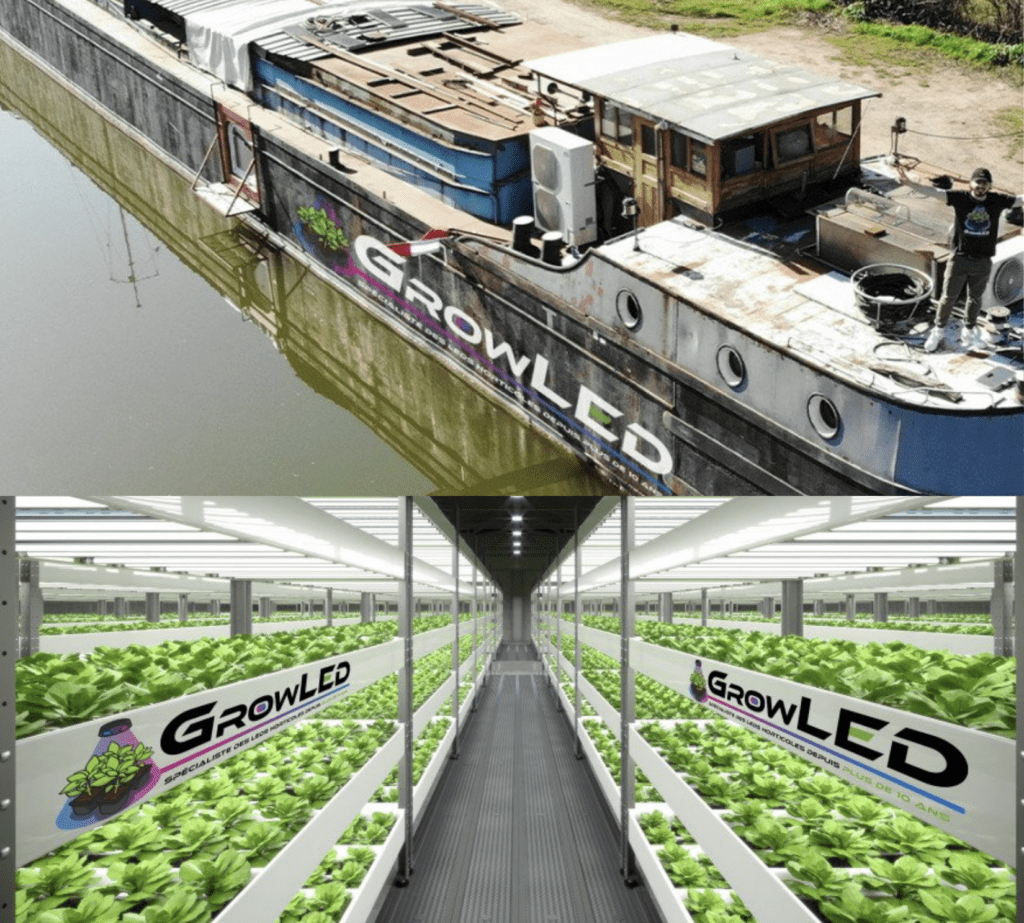
Contraintes Réglementaires liées à l’Éclairage de Nuit
Warning: Night lighting, especially in agricultural areas, must comply with certain regulations to minimize the impact on local wildlife.
In certain agricultural regions of France, such as Brittany or In Normandy, where greenhouse farming is intensive, residents have expressed concerns about “light pollution” from excessive nighttime lighting of greenhouses used to grow tomatoes and other vegetables >. These lights can be visible for several kilometers, disrupting not only wildlife (e.g. birds) but also affecting the quality of life of residents by interfering with their natural sleep cycles and ability to observe the stars.
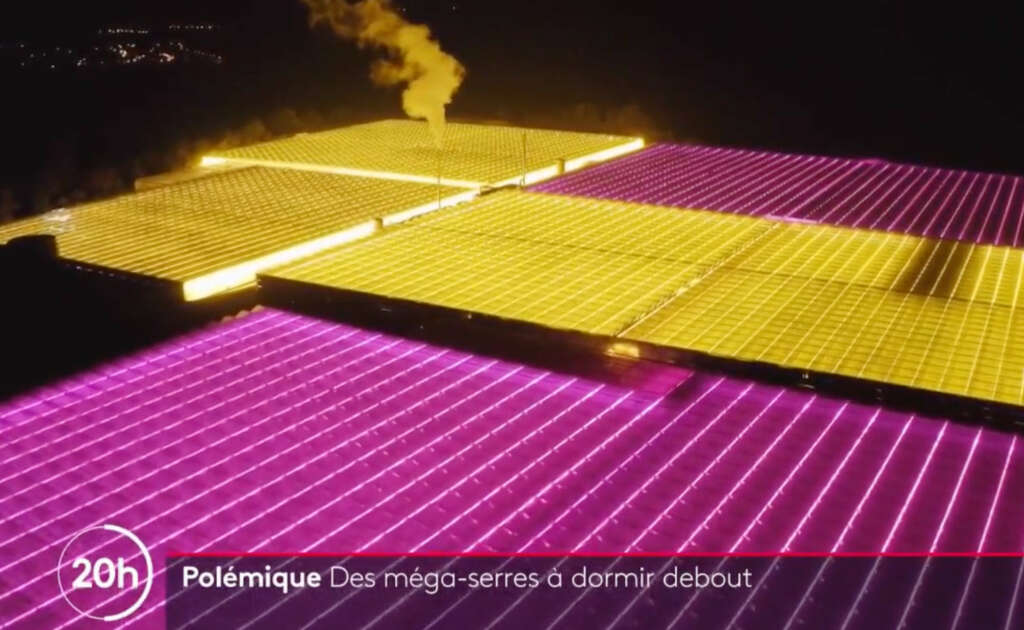
In many countries, including the United States, regulations govern the use of artificial lighting at night to protect natural habitats and species sensitive to light. For example, the U.S. Endangered Species Act and local ordinances in areas like Florida restrict outdoor lighting to prevent harm to wildlife such as sea turtles, whose nesting and hatching cycles can be disrupted by excessive illumination. These measures aim to maintain biodiversity and preserve natural ecosystems.
The use of LEDs in agronomy has undeniable advantages, offering possibilities for innovation and efficiency that can revolutionize agricultural practices. However, it is essential that this technology be deployed in a reasoned and reasonable manner, without thinking only of profitability. Our good old sun still has many good years ahead of it, lighting must be a complement to its natural action.
As a powerful tool, LEDs must therefore be used without us becoming sorcerer’s apprentices, taking scrupulously care to respect natural cycles and ecological balances. This involves finding the right balance between optimizing agricultural production and preserving our natural environment. By responsibly integrating LEDs into our agricultural systems, we can not only increase productivity, but also contribute to a more sustainable agriculture for future generations.
Do not hesitate to contact us for any questions regarding this topic!




